Oct 24, 2019 | Internships

Sani Tripathi is a second-year biomedical engineering student. This past summer he earned a fellowship to participate in Yale’s Undergraduate Medical Research Program. Below he recounts his experience, including application process and eventual acceptance, as well as plans post-graduation.
As a freshman attending the University of Arkansas, I was initially unaware of the countless opportunities that students have. Having completed many research projects in high school, I wanted to continue that during my undergraduate career. Being part of the First-Year Engineering Program (FEP) and taking the Honors Research Experience course, I was fortunate enough to start working in a lab (Rajaram Lab) about a month after I moved-in on campus. Having heard about REUs and other summer research fellowships pursued by previous honors students, I was motivated to begin my search.
I vividly remember sitting on my bed working on homework when I received an acceptance letter from the Yale School of Medicine inviting me to participate in their summer undergraduate medical research program. I was beyond ecstatic to be in the position I was and ultimately chose to spend my summer in New Haven, CT for 11 weeks. The program, funded by the National Institute of Diabetes and Digestive and Kidney Diseases (NIDDK), was designed to give students a “hands-on” research experience in clinical and basic science labs focusing specifically on kidney, urological, and hematological diseases.
For 11 weeks, I was placed in Dr. Lloyd G. Cantley’s lab in the Section of Nephrology where the research focus was to look at the most intrinsic renal cause of Acute Kidney Injury (AKI): Acute Tubular Injury (ATI). The lab’s current work is dedicated towards determining mechanisms of renal tubular development and repair following ischemia/toxin exposure. Being intimidated at first, I was mentored closely by a Postdoc Fellow (Nikhil Singh, M.D., Ph.D.) and a 4th year medical student (Zachary M. Avigan) who helped me learn the ropes of important techniques I would need for my project. My daily schedule consisted of arriving to lab around 8:30 AM every morning and on some days attend meetings in the middle of the day and typically leave at 5:00 PM. I had the opportunity to attend weekly Internal Medicine and Nephrology Grand Rounds which lasted 1 hr. each where physicians, medical students, residents, fellows, and other faculty members all met to discuss cutting-edge research in the field and talk about cases seen at the Yale New Haven Hospital during the previous week. In some of the meetings, physician-scientists from other notable schools would come to discuss their research. Through these meetings, I saw how some of the research in labs at Yale were directly translated to the hospital setting and used to treat patients. Outside my work hours, I was also able to shadow a nephrologist and witnessed the physician-patient interaction. Finally, I also attended our lab group meetings to stay up to date on what others were working on as well as met with Dr. Cantley 1 on 1 to update him on my progress. He was always willing to help me grow scientifically as well as personally by giving me valuable advice!

My project was about looking more closely at cellular senescence, a mechanism linked to AKI, and studying the expression of a specific marker (p21). By performing immunostaining on Human Kidney-2 (HK-2) cells, I utilized immunofluorescence qPCR, and Imaging Mass Cytometry (IMC) to perform tests on my samples. IMC was an exciting technology that I got a chance to use which allows for the detection and quantification of more than 40 protein markers on a tissue section. The Cantley Lab is the first lab in the country to use IMC to look at kidney biopsy specimens specifically and answer basic questions regarding injury and repair.
At the end of the program, I along with 15 other students presented our posters at the KUH Summer Undergraduate Research Conference at Vanderbilt University Medical Center. Our program along with 10 other KUH programs from Harvard, Mayo Clinic, Emory, Wake Forest, UT Southwestern, and others also presented their projects.
All in all, I am thankful for this experience and would like to express my gratitude to my mentors here at UARK as well as Yale School of Medicine for their consistent support. Looking forward, I am now leaning towards pursuing a Ph.D. degree after graduation due to the excellent experience this past summer and am hoping to possibly participate in another research program this summer!
Sep 25, 2019 | Questions & Answers

Justin Combs is a fifth-year student in the International Engineering Program at the University of Arkansas. In 2018-2019, he spent a year in Germany at the University of Darmstadt and Institute of Molecular Biology. Below he discusses the import of his travel abroad experience, advice for peers, and goals after graduation.
BME: Where are you from? How far along are you in your studies at the U of A?
COMBS: I’m from Bryant, AR and I’m now a fifth-year senior at the U of A (the International Engineering Program is 5 years).
BME: When/how did you first hear about study abroad opportunities for engineers?
COMBS: I heard about some while I was in high school, but I didn’t learn much until my freshman year at the U of A.
BME: Why Germany?
COMBS: Why not Germany? Germany is renowned for great engineering and there is a lot of really interesting medical research going on over there.
BME: Where in Germany were you, and what did you accomplish (internship, study, etc.)?
COMBS: I spent the first part of the year in Darmstadt (south of Frankfurt) attending the Technical University at Darmstadt, then I moved to Mainz to complete an internship at the Institute of Molecular Biology.
BME: How has study abroad aided your knowledge of biomedical engineering?
COMBS: It was a great opportunity to experience other cultures around Europe, which I think will help me to assess and meet needs of other cultures and people around the world when designing devices or products in the future.
BME: Any advice for other engineering students similarly looking to study abroad?
COMBS: If you ever have the opportunity, I highly recommend it and that you embrace the culture of whatever country you’re in. Experiencing other cultures and peoples can only help to broaden your view of the world.
BME: Any plans after graduation?
COMBS: I want to go into industry for a couple of years, then apply to medical school.
Sep 23, 2019 | Internships
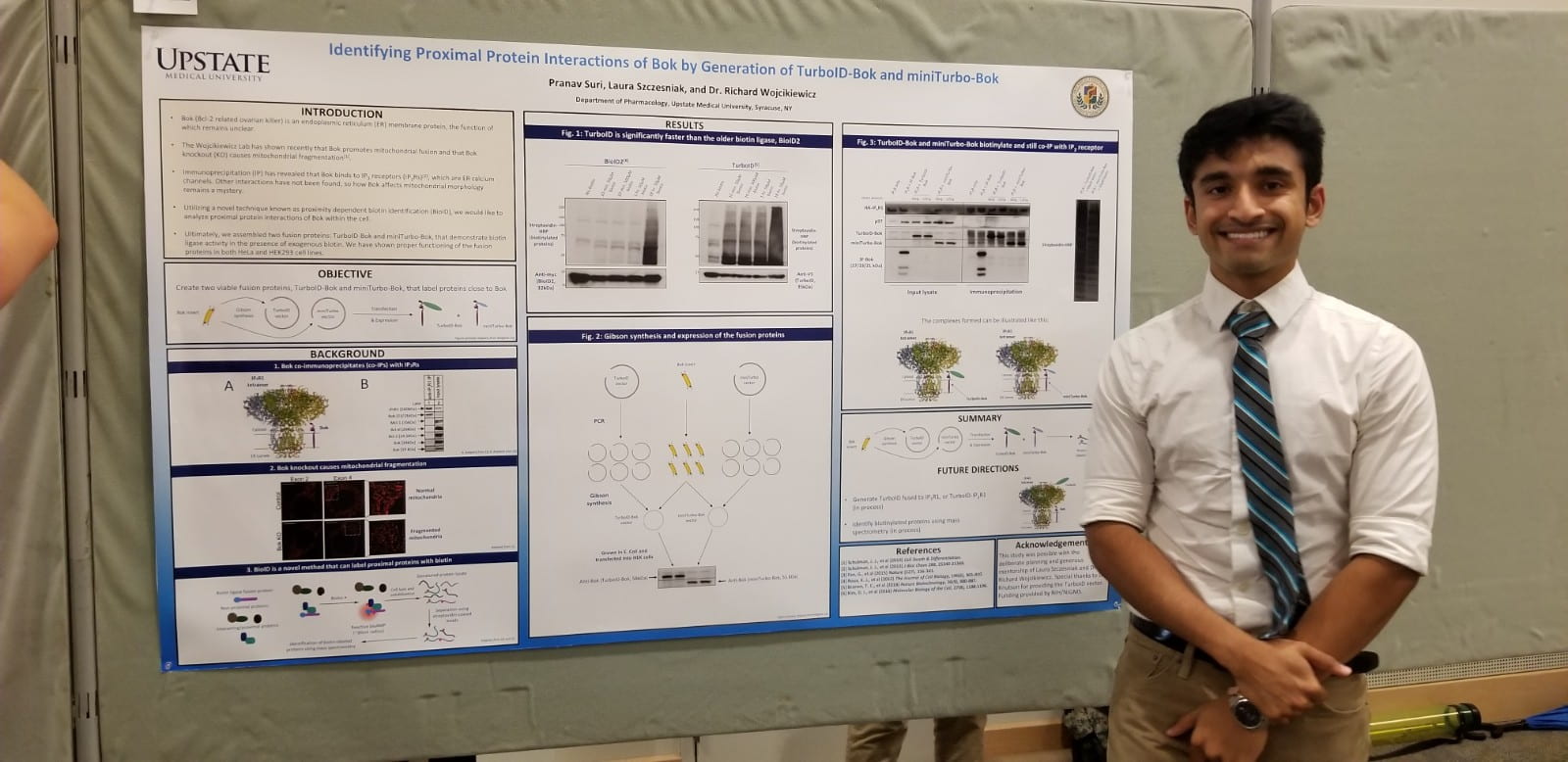
Pranav Suri is a biomedical engineering honors student at the University of Arkansas. During the summer of 2019, he participated in the Summer Undergraduate Research Fellowship – Physician Scientist Program at SUNY Upstate Medical University in Syracuse, New York. Below, he describes research experience, med-school shadowing, and solidified ambitions post-graduation.
I vividly remember the morning I received the email inviting me to the SURF-PS program at Upstate Medical. I was absolutely elated, to say the least. I never thought I’d have the opportunity to research under an MD/PhD student, shadow physicians, and work alongside some talented, driven students also interested in biomedical sciences. My project resulted in the generation of two new fusion proteins, made by linking one protein to the N-terminus of another. I learned some valuable experimental design skills, and I consider myself incredibly fortunate to have had such an opportunity. In the future, I intend to mentor other talented young students and pass on all that I have learned.
I was placed in Dr. Richard Wojcikiewicz’s lab in the pharmacology department, and after being shown around for the first week and learning the ropes, I began work. I got to the lab every morning at around 8 AM, and, in the beginning, while it was pretty overwhelming, I learned a lot not only about conducting research, but also about how to operate a lab. Meetings and staying up to date with the lab’s aims kept me focused and made me feel that I was part of a team working towards the same goal.
My first experiment was the transfection of human embryonic kidney (HEK) cells with green fluorescent protein. I imagine the other lab members had done this many times before, but when I saw my cells fluoresce for the first time under the microscope, I was absolutely mind blown. Each subsequent experiment was a little more difficult than the last, and I learned to record everything. The coolest experiment I did was a Gibson synthesis, which is just another way of ligating two DNA fragments into one large vector that can be grown in bacteria and then transfected into human cells. These new DNA vectors transcribed and translated into my new proteins. I completed my project before the program ended, and, during the last few weeks, my mentor let me conduct research independently! I was able to design experiments and carry them out myself, all while maintaining my own cell lines and reagents.
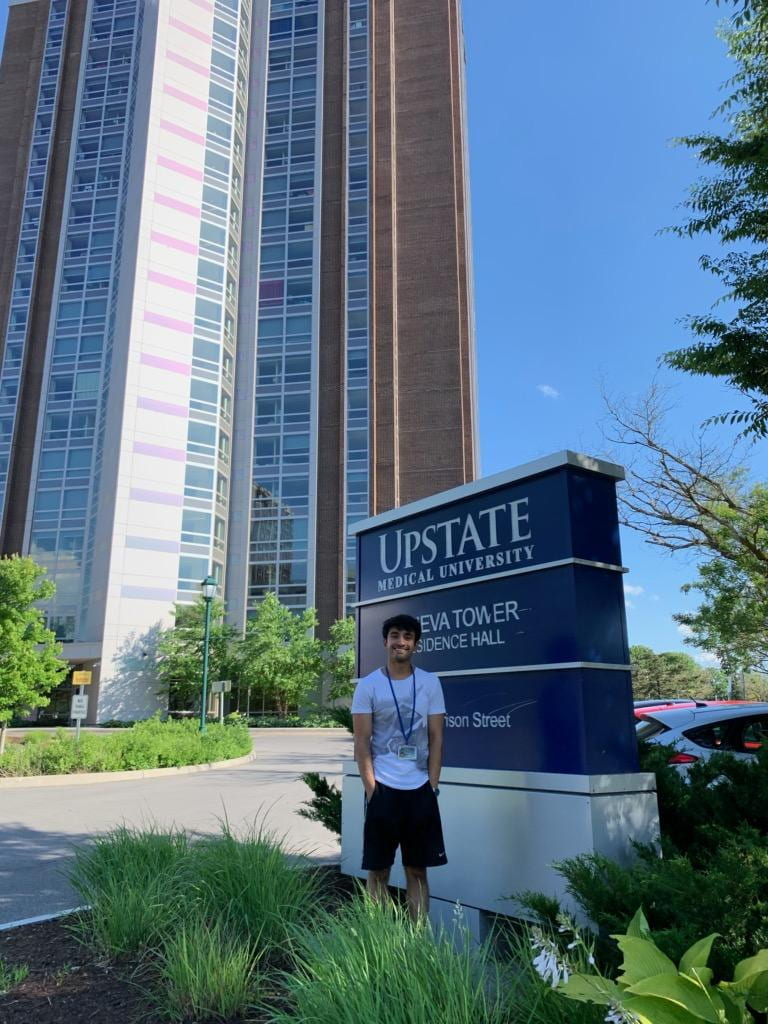
In addition to research, I got to shadow an orthopedic surgeon as part of the physician-scientist track. I observed as he consulted patients in the clinic, and as he performed complicated surgeries such as total knee arthroplasties and lipoma excisions. I also got to speak with residents, medical students, and senior physicians about their paths through medical school and how they eventually got to where they are now. My experience only reinforced why I chose to go to medical school, and I gave me an invaluable outlook of what it was like at every stage of the medical journey: student, resident, and physician.
Throughout the program, I met once a week with a journal club, in which each member would present an article of his/her choosing. The member would present the paper, and then we discussed the paper’s strengths, weaknesses, theories, and further directions. This sounds so boring, but it was actually kind of awesome. I learned how to critically read journal papers and understand what makes a paper strong and weak. I learned about the process of publishing an article in a reputable journal, and how to condense information from my research into something that is presentable to an audience.
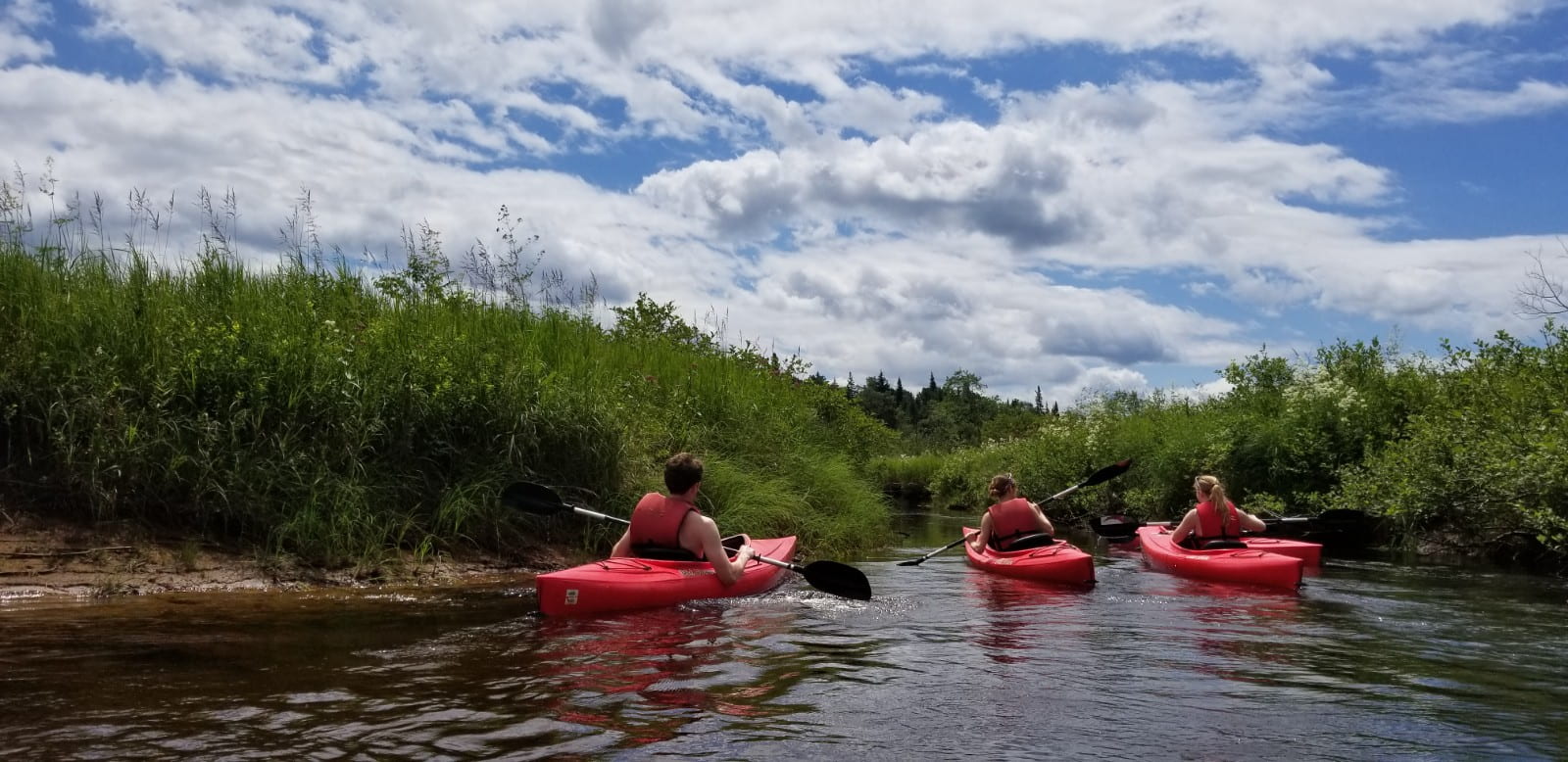
On the weekends, I got to explore Syracuse and bond with all of the other students there. We went hiking in Ithaca, swimming in the lakes around the area, and even kayaking along a stream. Overall, my experience at SUNY Upstate was absolutely amazing. While I learned a lot, I also learned about the important balance between work and life. The program was demanding, but it was always important to make time to relax with a walk in the park or movie with friends. I’d highly recommend the program to all of our students.
Sep 18, 2019 | Internships
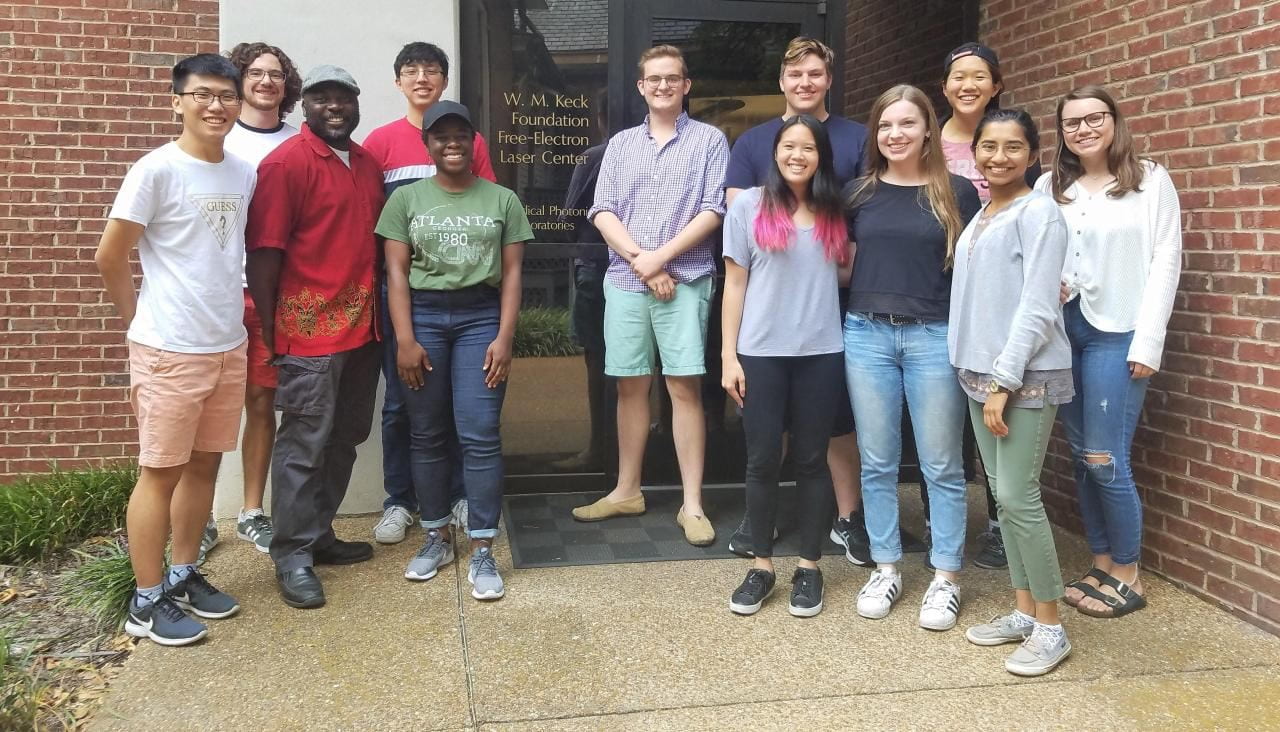
Gianna Busch is a third-year biomedical engineering student. This past summer she acted as a research intern for the Vanderbilt Biophotonics Center. Below she discusses departmental guidance, research experience, and aspirations to pursue a PhD post-graduation.
I have been planning to go graduate school since I was a freshman in college. Both of my parents have engineering degrees, and my mother went on to get her masters. However, I was only planning to get my masters degree. After spending my summer working as a research intern in the Vanderbilt Biophotonics Center, my plans for my future changed.
I first heard about this opportunity through Dr. Rao’s weekly emails to the BME Department. I had been on the hunt for a summer opportunity – either an internship or a research program – and I still wasn’t sure of my plans so I decided to just go ahead and apply. I ended up getting into the program and I was very excited! However, although I work in Dr. Quinn’s lab and many of our projects involve multiphoton microscopy, I had never actually worked on those parts of the projects and I was very unfamiliar with Biophotonics in general. I was definitely a bit nervous moving to Nashville and starting my program, but I was also very excited to learn more about a new field of biomedical engineering and hopefully get some more insight into what I wanted to do with the rest of my life.
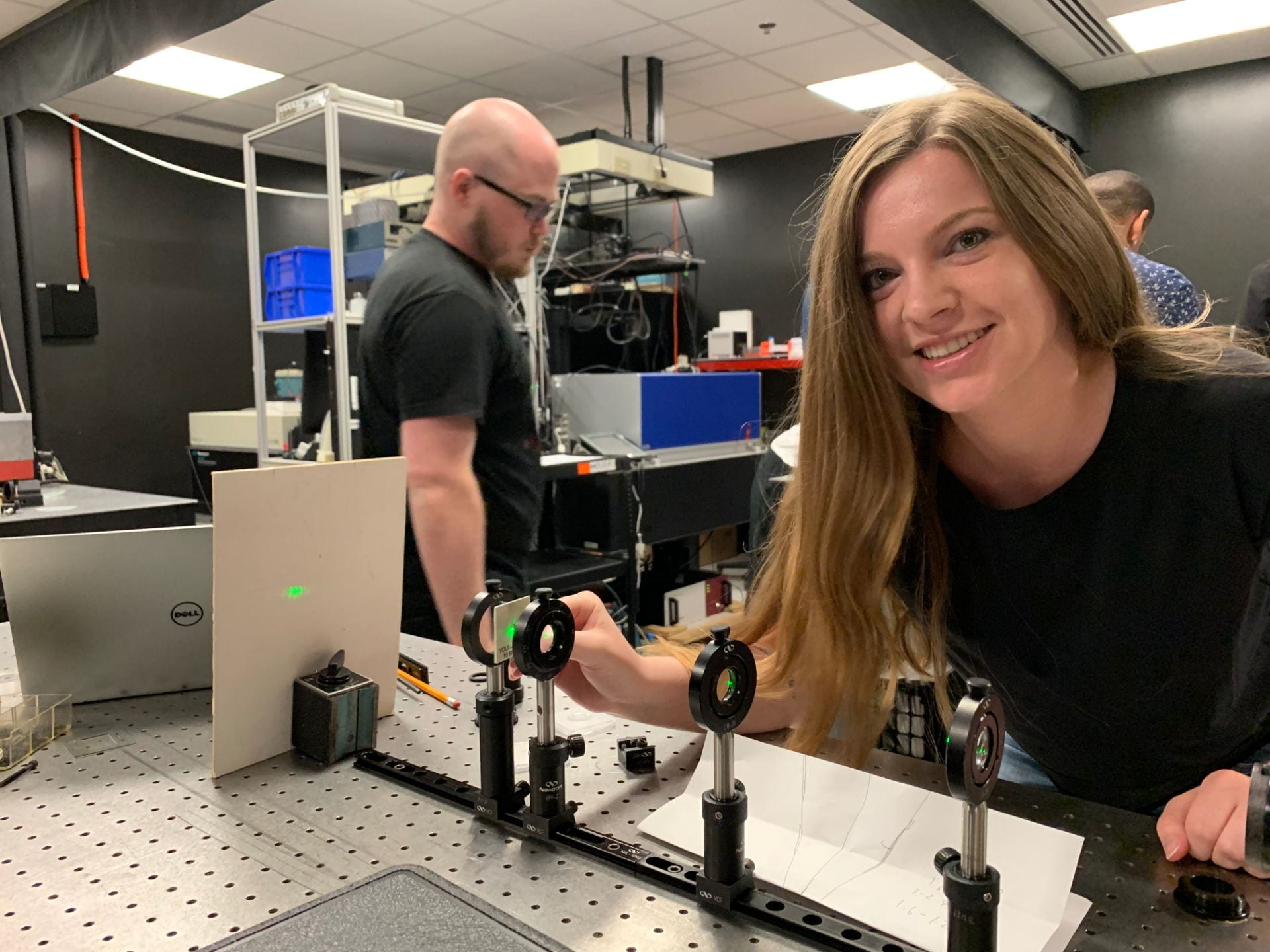
At the Vanderbilt Biophotonics Center, I worked in the lab of Dr. Anita Mahadevan-Jansen with one of her grad students, Sean Fitzgerald. Her lab’s main focus is applying optical techniques for use in diagnosis and neuromodulation. The three main research areas of her lab are optical diagnostics, neurophotonics, and image-guided surgical techniques. I was assigned to work on the Scanned Oblique Plane Illumination (SOPi) microscope. The Biophotonics Center is building the SOPi microscope with the assistance of the Kozorovitskiy Lab at Northwestern University, where it was first developed. Eventually, the Vanderbilt SOPi will be used in a similar way to the Multiphoton Microscope here at the University of Arkansas, with other lab groups and researchers able to come and image their samples with it. While I was at Vanderbilt, the microscope was not yet ready for use by other researchers. However, I spent the summer learning how it worked, practicing how to image with it, and conducting image analysis on some of our test samples. Although I love my research and lab at the University of Arkansas, it was valuable to experience different projects and technologies, as well as working under a different PI in a different lab culture.
In addition to the research aspect of the program, the Biophotonics Center also organized weekly professional development sessions for all of the research environments. We covered topics ranging from financial responsibility to applying for the NSF Graduate Research Fellowship to what to expect from life as a grad student. It was through these sessions that I learned about the job opportunities available to me if I decided to pursue a Ph.D. Although I was already planning to go into Research & Development after college, I learned about how earning a Ph.D. would enable you to successfully manage projects from start to finish and lead teams of other people. I am now planning to earn my Ph.D. in biomedical engineering after I graduate from the University of Arkansas. I absolutely love getting to be a part of biomedical research, and I am looking forward to pursuing a career path that will allow me to take on more of a leading role in my projects. I plan to use the rest of my time at the University of Arkansas to further my research, determine what I would like to specialize in for my graduate research, and hopefully participate in another research program next summer to get an even better idea of the opportunities available to me.
May 8, 2019 | Uncategorized

Biomedical engineering seniors participated in the Undergraduate Research Symposium on Thursday, April 25, in which they presented their honors theses and fielded questions based on their research. Below is a list of students, their theses, and advisors.
- Alaa Abdelgawad’s honors thesis was titled “Investigation of Acute Radiation-Induced Changes in Oxygenation in a Murine Beast Tumor Model.” She was advised by Narasimhan Rajaram.
- Andre Figueroa’s honors thesis was titled “Design of Microporous Membranes for the Development of Brain-on-Chip Devices.” He was advised by Kartik Balachandran.
- Baylor Bush’s Honors Thesis was titled “A Bioinstrumentation Active Learning Educational Module: The Design of a Working Temperature Sensor Using a NTC Thermistor,” advised by Michelle Kim.
- Emma Sullivan’s honor thesis was titled “Generation of a CCL2 Knockout Using CRISPR/Cas9 and Lipid Mediated Transfection in CT-26 Murine Colon Carcinoma Cells,” advised by Timothy Muldoon.
- Jackson Hedrick’s honors thesis was titled “Phenotypic Characterization of Differentiation of Human Mesenchymal Stem Cells to Smooth Muscle Cells,” advised by Raj Rao.
- Josh Fahy honors thesis was titled “Role of Angiotensin I and II on the Tissue Mechanics of the Aortic Heart Valve,” advised by Kartik Balachandran.
- Katelyn Heath’s honor thesis was titled “Modeling and Validation of Tissue Optical Properties in the Photon Transport Regime,” advised by Timothy Muldoon.

Pictured: Alaa Abdelgawad
- Katie Brandecker’s honor thesis was titled “Effect of Polymer Composition of Injectable Hydrogels on Cumulative Release of Methylene Blue,” advised by Ryan Tian.
- Kristyn Robling’s honor thesis was titled “Characterization of Ocone Mediated TEMPO-Oxidized Nano Cellulose Mixed-Matrix Membranes During Ultrafiltration and Hemodialysis,” advised by Jamie Hestekin.
- Lauren Buchele’s honor thesis was titled “How Infant Positioning Impacts Hip Motion and the Associated Implications for Babies with Hip Displasia,” advised by Erin Mannen.
- Marinna Tadros’s honor thesis was titled “Designing In-Vitro Mitral Valve Mounting and Testing System for Micro CT.” She was advised by Morten Jensen.
- Mason Belue’s honor thesis was titled “Vector Flor Imaging in Pediatric Cardiology—Extracting and Validating Data,” also advised by Morten Jensen.
- Olga Brazhkina’s honor thesis was titled “Development of a Model for Accelerated Fatigue Testing in Venous Valves,” advised by Morten Jensen.
- Tasha Repella’s honor thesis was titled “Comparing the Effects of Fibroblast Growth Factors on Growth Rate of Human Fibroblast Cell Lines,” advised by Raj Rao.
- Wenbo Xu’s honor thesis was titled “Investigating Virus Clearance via pH Inactivation During Biomanufacturing,” advised by Xianghong Qian.
Two students also presented their independent research projects:
- Shelby Bess’ project was titled “Diffuse reflectance spectroscopy quantifies functional tumor response in a murine subcutaneous model of colorectal cancer,” advised by Timothy Muldoon.
- Shelby Johns also discussed her project, titled “Development of a C57BI6J Mouse Model for Calcific Aortic Valve Disease Progression,” advised by Kartik Balachandran.

Afterwards, students participated in the Poster Reception for Honors Research & Independent Study, in which members of the department and college could further explore and ask questions.
Congrats to the 2019 biomedical engineering seniors on their thesis completion!
May 7, 2019 | Uncategorized

Hogeye Marathon Relay Team from Now Diagnostics (Anne Preut second from right)
Anne Preut is a graduate of University of Arkansas’ Biomedical Engineering Department. Below, she describes her experience as a Product Development Scientist at Now Diagnostics and seeking employment post-graduation.
In November 2018, I started at Now Diagnostics (Springdale, AR) working as a Product Development Scientist. After graduation in May and a celebratory road-trip through the Southwest, I began the job hunt. Specifically, I was looking for a position that would challenge me, provide mentorship and positively impact healthcare through low-cost solutions and increased access for people. Now Diagnostics seemed to fit the description when a fellow graduate student at the University of Arkansas described the company to me. I reached out to see if and what positions were available. Cold-calling can be intimidating, but I would like to take a moment to encourage students to email or call the companies that they are truly passionate about. It only takes a moment and what’s the worst that can happen? The persistence paid off as I landed a phone interview with Vicki Thompson, who is my current boss. She then invited me to meet her Product Development Team as well as meet with the rest of the management team and CEO. After the interview, I knew this was a company where I could develop professionally and build a career (and thankfully they hired me!). Skills such as image analysis and 3D printing that I gained through the Biomedical Engineering Graduate Program at the University of Arkansas have been instrumental to growing in this new position. Most importantly, I have continued to grow as an independent researcher and build on my previous experiences as a graduate research student.

BioDot RR120 Web Handling System

Vision System
Image analysis was instrumental in my thesis work as well as one of the most challenging and rewarding classes I took during graduate school. Understanding the basic principles of image analysis has been helpful as I work to scale-up the production of our hCG test. The equipment that I use includes a vision system to ensure that coating each membrane occurs in the programmed location. Additionally, understanding these principles has enabled me to effectively communicate with the manufacturer of the equipment.
Another core component to my thesis work was 3D printing in order to develop a neurovascular model. Using this knowledge, I initiated a unique solution to an issue on our scale-up equipment. We run multiple sizes of membrane on the equipment, which requires readjusting the dispense reels that hold the membrane rolls. Through the NWA Fab Lab in Fayetteville, AR I 3D printed components that appropriately space each membrane to be perfectly centered, which ensures coating in the desired locations. Although a simple solution, this minimizes setup time and ensures proper alignment of the membrane for every use.

3D printing at the Fab Lab

Finished product on scale-up equipment
As an undergraduate, I worked in three labs, yet graduate school gave me the opportunity to work independently driving my own research ideas through the guidance of my advisors, initiated through classes and collaboration with fellow graduate students. This has been the most instrumental in preparing me for my current position. Every day requires new iterations to my research as I work to scale-up our hCG test and prepare for the tech transfer for our Strep test.
This is the challenging environment that I envisioned when I began my job hunt, but even more so I am thankful for the supportive, encouraging and friendly atmosphere that Now Diagnostics embodies. In February, a coworker initiated a fitness challenge for everyone to walk one-mile per day. This resulted in almost half of the company completing the challenge as well as three coworkers and myself completing the Hogeye Marathon Relay. I know that the Biomedical Engineering Graduate Program has been foundational to building my skill set and I look forward building these friendships as well as my career at Now Diagnostics.
















